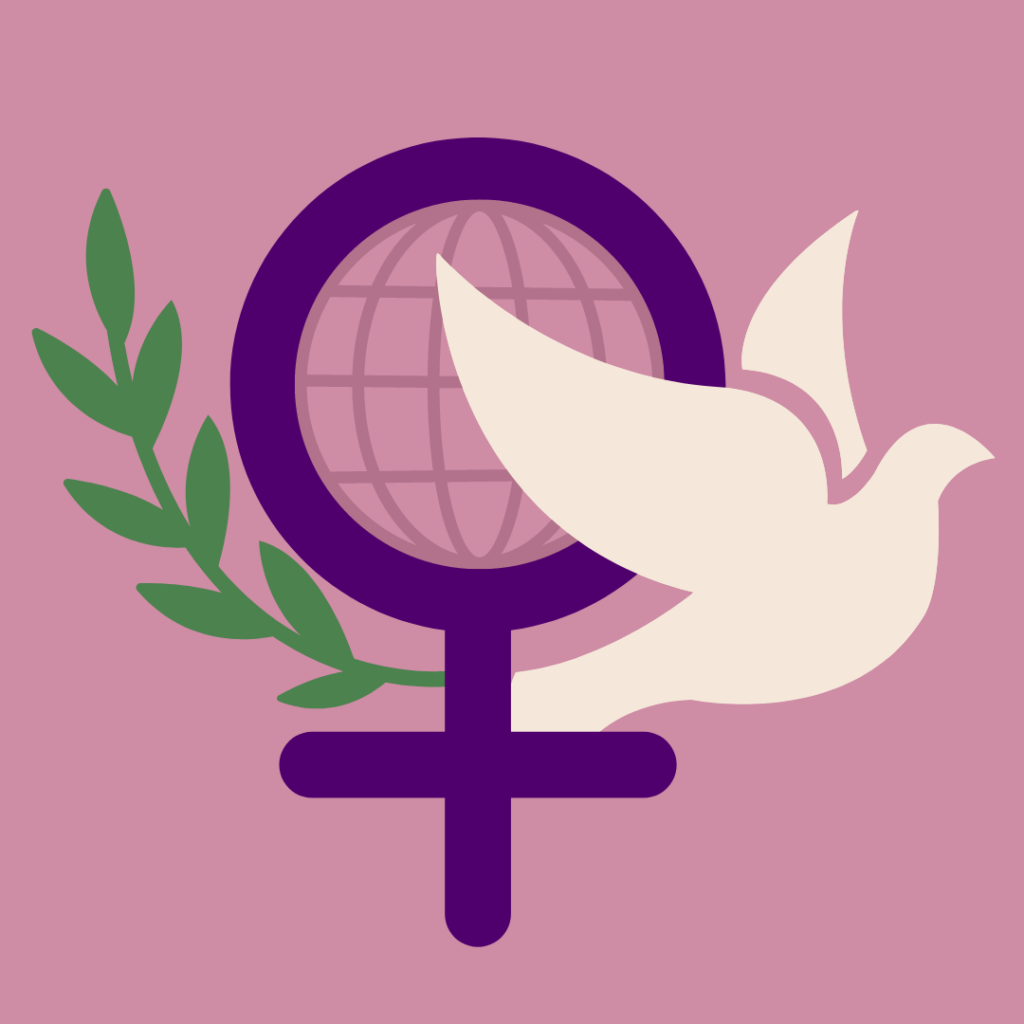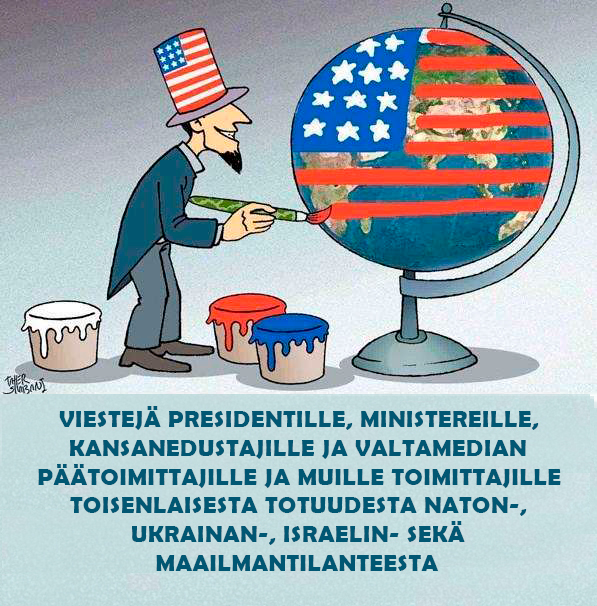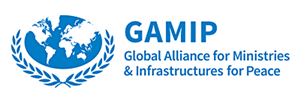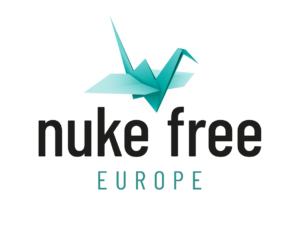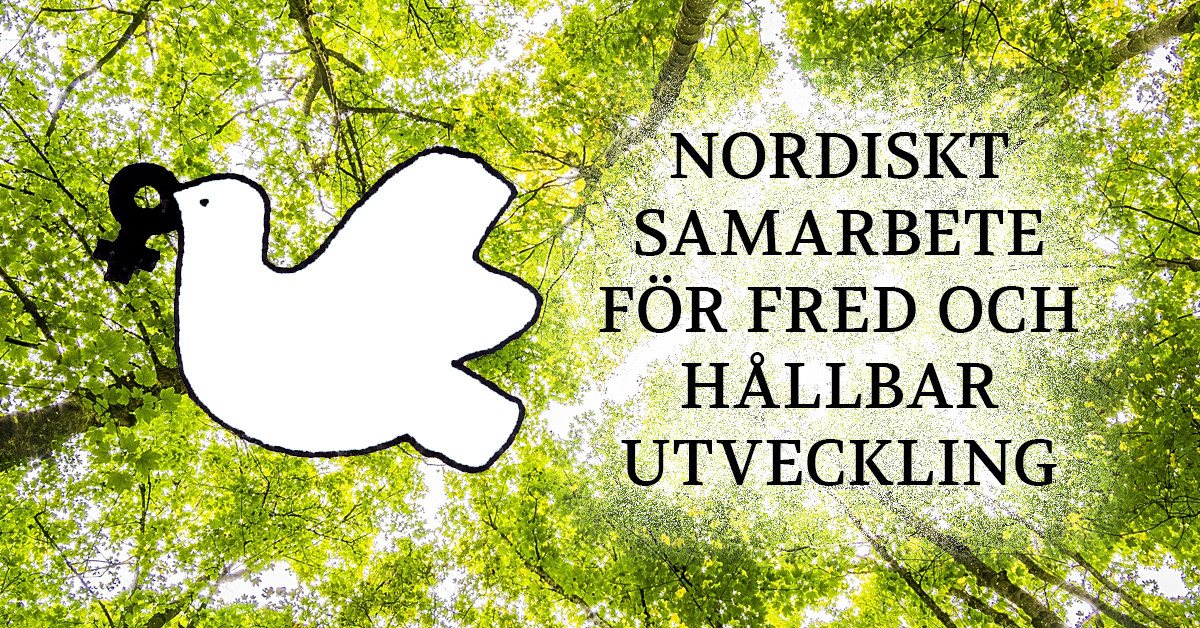
Peace ministries instead of military alliances – Fredsministerier istället för militärallianser
Peace ministries instead of military alliances – Fredsministerier istället för militärallianser
Andreu Ginestet, silent diplomat/tyst diplomat, artist/konstnär, (engelska – English) (zoom
Abstract
It is a commonplace that we confuse dominance with security. Humankind is used to obey by the law of force and brutality. This is what restricts liberty. A liberty restriction is not the same as security. Security in modern times is supposed to guarantee a restricted structure for liberty we describe as democracy. Democracy is not the same as equity or equal chances for all, but it is supposed to be i.e. the lesser evil in terms of social justice, freedom of speech, etc. Undermining democracy imposing dominance of one over an other destroys security. NATO and the US openly profess deterrence by ”winning wars”, a false promise.
In this document I wish to clarify why entering a military alliance that exists and declares itself wanting to cause trauma and inflict pain is a contradiction in terms of security.
Let me be clear and frank: the NATO military alliance serves one purpose, as Jamie Shea put it in a conference 19th of April 2022:
”… build up its forces in Central and Eastern Europe, uh, both, for deterrence, and because deterrence now means, uh, war fighting! It means winning wars, and no longer simply hoping to prevent them, at least for the time being.”
Now, you tell me, whenever a war really lead to a winning situation in terms of stability and peace? Has any war ever lead to a situation where the looser of the war really took the path of vertue? Is Germany walking the path of vertue after being defeated in WW2? Who argues that Germany defending democracy at the Hindukush is on the path of vertue?
Introduction
Let me present here some issues in detail. I work as a silent diplomat for all and in many countries of the world. In Brussels, at the Altiero Spinelli Building, on 27th of September 2012 I diverted a nuclear conflict threat that was openly outspoken by Vladimir Leontiev, director of the section for nuclear disarmament in the Foreign Ministry in Moscow. If the right people were not at the right spot in the right time, humankind would have suffered a different fate. What I mean is that if the efforts to build peace vanish or vanquish, human destiny is at stake. Humankind is by no means in a position to deter violence in a rational pattern. Instead it always falls back for the temptation of violence, as if it were addicted to violence. Violence is an addiction as alcohol or tobacco. It requires treatment.
So, why am I here in Helsinki talking to government members and representatives of the peace movement today, speaking to you?
On 22/4/2022, at the invitation of the Finnish organization Naiset Rauhan Puolesta, I met the Finnish Minister of Foreign Affairs, Pekka Haavisto, for a discussion in matters of international security. With the aim of initiating a discussion, in my role as a silent diplomat, I was asked to address an open letter to the minister. It was entitled ”Finland at war?” and was first published by the peace organization Naiset Rauhan Puolesta in Finland. On the same day, however, it was translated into other languages and published by several individuals and organizations around the world.
In my approach to peace, I combine the concepts of normal day-to-day life, putting security for markets, sustainability and peace at the forefront of the attention of the general public. Economy –normal life – needs stable markets. Major dislocations caused by conflicts create unstable, volatile and economically damaging markets. Economic relationships are, first and foremost, relationships between people and businesses. If these are not cultivated in the sense of peaceful, mutually beneficial cooperation, the result will be situations like the one we are experiencing in the Ukraine war.
The Ukraine conflict is not accidental and has not arisen recently. This conflict serves multiple interests on many sides, in Ukraine, in Russia, in China, in the Western Hemisphere and beyond. The decision to engage in conflict was born way before 2014, years ago. We are not talking about simple, but very complex and interconnected processes.
In addition, there are many unknown factors that often, and especially in the beginning, can only be explained from scientific research, including i.e. epigenetics and complexity architecture. Thus, new and more complex problems are constantly emerging, while they are being uncovered. If these new problems do not find solutions, further complexities will result.
Based on my 40 year experience and special knowledge development, I developed models that anticipate developments. Consequently, I describe strategies that turn conflicts into opportunities. I designed in 1993 an economic model, which I labeled the mechanical valley, foreseeing the crisis of work and automatation due to the industrial revolution 4.0. I even depicted the first hints in my monumental sculpture Elan in 1988. I have also foreseen the conflict in Ukraine. The problem for society is that nobody listens, nobody wants to hear truth. Everybody wants truth and confirmation hammered in his brain with pain. Prevention does not exist. It is out of perspective.
Let me proceed. New explanations for new problems are innovations. Innovations need about 10 years to find a verified acceptance into the social knowledge and consciousness. Some of the ”innovations”, such as i.e. the practical handling of arguments of complexity and the resulting danger of entropy, have been appearing in Spanish media since 2007. This was the case after me, as a researcher, artist and mediator, having conversations with relevant personalities such as Jorge Wagensberg, and the latter regularly referred to the problems I presented on Spanish national TV. This process of communication became the impetus for a general adaptation in the behavior of the population, dealing with complexity in the sense of a noun and no longer as an adjective, thus changing the entire narrative.
Looking at the future task of peace ministries in Finland, the short term.
If we look at possible future tasks of Peace ministries, they are pretty repetitive. Conflicts follow patterns that are boringly alike. The interesting aspect of conflict resolution is the rebuilding after destruction. So, what does repairing or restoring functioning democracies look like?
1. Soothing of conflicts:
First, peace mediators work out a stop, or at least an interruption, of the conflict on all sides. This is not easy because it is precisely those distant parties that have economic advantages from the conflict that see it as a source of income. Only then, peace mediators turn to the conflict parties. By explaining conflict causes in a new way on the systemic level, conflicts are redefined and re-interpreted in different ways. This gives rise to new opportunities for understanding, for one’s own commitment, for shared responsibility and for finding common ground in coping, in the sense of comprehensible, emotional work. This provides an emotional basis for shaping relationships. Peace mediators thus reframe manners and interaction.
2. Offering trust-building measures:
Trust comes from dialogue, but especially from common ground for understanding. Solutions grow from the common emotional bond that is created with the new narrative. These worked-out solutions allow the conflicting parties to become partners, often against the attempt of hostile takeovers by third parties. Third parties are understood to be the systems (also agents) influencing the process, not individuals. Peace workers make sure that fair agreements and negotiations take place, especially in conflict situations and that no forced and thus conflict-prolonging dependencies are entered into.
3. Consolidation of the societies:
In day to day life, trade establishes the market and society is very much derived from the market. In a conflict situation, a “specific type of market” is immediately created. In such situations, violent structures often take hold once again. Precisely because groups in need of help reach for the first offered hand, even if this help is expensive and deceptive. Peace mediators make sure that fair agreements and negotiations take place, especially in conflict situations and that no forced and thus conflict-prolonging dependencies are entered into. It is important that the transgressions that arise in the conflict are avoided.
4. Establishment of functioning democracy:
As soon as the experience matures that trustful dealings bring benefits to all sides, inhabitants of war zones develop the need to restore a sense of happiness. This sparks a great desire and welcome regarding the realization of dreams. This status quo serves as an impetus for a democracy supported by a marketplace opening up to foreign investors and entrepreneurs.
Peace Ministry employees, civil servants obviously have to look at possible hindrances. Often, very material and banal arguments are behind the narrative of conflict. However, less attention is paid to changing markets that fuel the conflicts, as i.e. rare natural resources. These interests are be-willingly not mentioned in conflicts. The Ukraine conflict, for example, may well be fuelled about raw materials such as lithium. In an article dated April 1, 2022, published online by Simone Fant in the magazine Matteria Rinnovabile, he describes which raw materials are available in Ukraine and could serve as spoils of war. Lithium is specifically highlighted in this article. Why is this article published? Because a U.S. lobbyist in the U.S. National Intelligence Council-Rod Schoonover-emphasizes this fact.
There is obviously a past reference to such a procedure. It was a silent diplomat who uncovered a scandal in 2010 in a Western government agency regarding the handling of commodity data. The uproar, caused by documents written by the silent diplomat, was in the media less than 14 days later, and led to a political clarification in the Congress of this country’s resources, by General Petraeus. Suddenly there was lithium in Afghanistan and suddenly Afghanistan was filthy rich.
The question now is how civil servants in a Finnish peace ministry would help conflict parties to return to a rational negotiation of interests based on a healthy emotional ground. Civil servants would have to do so facing those interested parties in the conflict that are in a comfort zone first. In doing so, any mediator pursues similar goals and applies similar methods which, by analogy, are also used methodically and sustainably by other agents in other countries, as i.e. the German government.
The BMZ (German ministry for cooperation) organizes events on market security on the basis of active peace policy. (to be read in a publication of the BMZ from October 2021: ”With responsibility to success” and likewise to read in the announcement of an event with discussion ”Who wants security, needs peace policy” on – 11 May 2022, 17:30-19:00 o’clock). Thus, the German Government provides with examples on how to set up sustainable peace development and Finland may follow the path or find better alternatives.
Now to the truth about NATO – possibly leading Finland into war
After the meeting with Pekka Haavisto it became clear to me that Finland is going to apply for NATO-membership. Let me be clear and frank: the NATO military alliance is the world’s largest war machinery.
Example 1
I was regularly engaged in conflicts at the international level as a silent diplomat since 2003. During this time, I witnessed, among other things, how large international alliances compete for tasks, compete against states and national interests, ”harmonize” them to their own advantage by means of conflicts and make them their allies.
This refers to NATO and its adversary – the Warsaw Pact. Both alliances survived the Cold War conflict, one as a triumphant winner, and the other as a looser. With the abandonment of the conflict, both alliances had no task and thus no mission left.
Instead of dissolving, the actors in the alliances looked for new ”tasks” and purposefully built up new fronts.
As I do not want to be called any names, I have made the effort of backing my statements with the verbatim transcription of documented statements by employees of NATO.
The building up of “new fronts” is especially true for NATO. On June 6, 2014, in the conference ”Overhauling Transatlantic Security Thinking”, Sorin Ducaru, Assistant Secretary General for Emerging Security Challenges, NATO, was also present. The latter pronounced in the plenary that ”NATO exists to enable energy security” (verbatim transcripts of Andreu Ginestet).
In a global civil society, providing security is fine. Providing energy security could be beneficial to civil society. The sentence was uttered in the context of Russia’s occupation of Crimea and the Maidan coup. But, this also leads to the conclusion that NATO, until the outbreak of the conflict, wanted to carry out a non-military task that was foreign to it and not intended, outside of its actual purpose. NATO had opened a new front. One of the people present in the room asked in surprise: ”Is NATO going out of its area?” There is no need me discussing much such statements and answers to the statements, as they are worded by NATO members.
Example 2:
Eight years later, 19th April 2022, we see and listen in an online conference at minute 25:25 to Jamie Shea, former Deputy Assistant Secretary General for Emerging Security Challenges of NATO, saying something quite different. I went through the process of verbatim transcription of his words myself for the sake of the conference today about the founding of a peace ministry in Finland and about the possible role of a NATO membership of Finland in the context.
”Obviously the enormity of the Russian invasion of Ukraine was bound to sort of oblige NATO to revise its arrangements for collective defense in Europe, um, after 2014 NATO played typical of alliances a delicate balancing act, on the one hand wanting to put multinational battalions, as Rachel pointed out, on forces, uh, into Central and Eastern Europe, to fill that vacuum that I referred to earlier, but without provoking Russia, and frankly, without parking a lot of very expensive forces full time in Central and Eastern Europe, which might be needed for example in a US perspective in the Middle East, from the European perspective in Mali or the Central African republic, um or, um, obviously from an American perspective also in the indo-pacific region. So, it was an attempt to sort of have a strategy which was based on a thin sort of blue line, uh, a tripwire of NATO forces, uh, which would be multinational, and therefore uh, a deterrent, but they wouldn’t have a war fighting capacity, so if Russia did attack the, the whole trick would be to get reinforcements across Europe really quickly, um. This became known as military mobility in the NATO jargon, and NATO set up a command in Norfolk, Virginia, for the Atlantic sea-lines of communication, it set up a reinforcement command, a rear, uh, support commander Ulm in Germany, and he conducted several exercises to make sure, that you know, if the call came, it could quickly get those troops back across the Atlantic, or from Western Europe into Eastern Europe. But it was always to my mind a very risky strategy, because it relied on very good intelligence early decision making, the forces being available, nothing going wrong with roads, or railways, or ports, or infrastructure, and I think, you know, what’s happened since, uh, uh, Putin’s invasion of Ukraine last February, is, NATO has, if you like, given up on fiction, that this is a serious strategy and it’s going back to a more Cold War posture. But the best reinforcements are the guys who are already there, uh, permanently deployed, with all of their equipment on the front line, ready to fight and prevail on day one. Although, although! I noted from testimony, that was given a couple of weeks ago, a couple of days ago, by the secretary of defense and the chair chairman of the joint chiefs in Washington, that the United States still is a bit hesitant, about this notion of permanent employment, Uh, it would like permanent basis, uh, in, uh Central and Eastern Europe, paid for by the Europeans, into an, and into and out it can rotate its troops, but anyway, first part of the answer I agree with Rachel is, that given that NATO’s former foremost task of its collective defense, it was inevitable, that it would have to uh, uh, up its game and revise its strategy, and build up its forces in Central and Eastern Europe, uh, both, for deterrence, and because deterrence now means, uh, war fighting! It means winning wars, and no longer simply hoping to prevent them, at least for the time being. Because, whatever the outcome of the Ukrainian conflict, given where Russia is today, also militarily speaking, taking over Belarus, whatever the outcome, we’re likely to see more sizeable, uh, numbers of Russian forces, uh, parked permanently closer to NATO territory, than we had before. But the interesting point is the other part of your question of course, why help to, uh, Ukraine. Well, here I, I put it all down to leadership. I mean the funny thing about NATO’s history over, since the end of the Cold War is that although NATO says, “We only defend ourselves, our mission is only to defend our own member states”, you know you’ve heard this from Jens Stoltenberg, uh, you know only countries that have the article 5 security guarantee, are going to be defended, this isn’t true! (with emphasis) as I know from my time as NATO, a NATO official. We defend, we intervened on behalf of the Bosnian Muslims, we intervened on behalf of the Kosovar, uh, a, Muslim community in 1999. We intervened on behalf of the Afghans, in behalf of the perceived population in Benghazi in 2011, as part of the, if you want, emerging responsibility to protect doctrine. Now I am not going to argue, that all of these were particularly successful (laughing) and they certainly got us into trouble with the Russians, uh, because, uh, coming back to what Rajan was saying a moment ago, uh, in my experience of negotiation with the Russians, they were even more upset, about some of these interventions by NATO, than they were about NATO enlargement, uh, at the time. So NATO has a kind of habit, where the leadership is there, where the mood is right, uh, of intervening on behalf of non-members, as well. … NATO doesn’t give itself a mandate, it depends upon, you know, the leadership is there, and if it doesn’t come from Washington, it doesn’t really come very much from Europe.” (Network 2020.org Panel Conference with Jamie Shea titled: ”Has NATO Found Its 21st Century Purpose? ”2022/04/19)
Thus, taking into account the words of Jamie Shea, April 19th 2022, NATO’s mission changed, compared to what Ducaru stated in 2014 with all of us in the room. NATO would no longer be a partner in securing energy markets, outside its authorized purview, but an “agency of division” and an instrument of deterrence, winning wars, lead by Washington.
In the perspective of global civil society, and in the perspective of the peace movement, and, precisely in the perspective of companies running business in a market, with this 2022 statement, NATO seems to primarily serve the interests of the US-MIC (Military Industrial Complex), working in favor of the MIC, but thus also, in particular, against the interests of the general global economy and against global civil society in particular, creating a momentum of flows of refugees, etc. Intelligence Officers from the intelligence community precisely point at such option in well thought and carefully formulated articles.
These two interpretations alone, the one from Ducaru in 2014 and the one from Jamie Shea in 2022, of what NATO is, show how difficult it is to deal with undefined identities of organizations that have outlived themselves and are monstrous relics of the past.
If Sorin Ducaru’s statement rather suggests that NATO has a market-serving mission and in 2014 transformed itself into an agency of civil society providing energy security, the second statement, on the other hand, would suggest that only a certain market may exist as a priority, namely, only the market that supplies the instruments for winning war. We all know this music, and its significance for global civil society.
Both statements, by Ducaru and Shea, were made in the context of the Ukraine conflict at different points in time. Their disparity at least raises doubts about what NATO is supposed to do, what its priorities are.
For the industry and the civil sector, Sorin Ducaru’s statement is perhaps understandable, but Jamie Shea’s statement is not understandable, because such a statement results in the automatic destruction of markets.
The task of any founding member of a peace ministry in Finland is to point out such inconsistencies – on all sides. It is important to stress that peace efforts have a direct impact on the people’s economies in day-to-day situations, if peace work provides security, while a military alliance does the opposite.
In the discussions with representatives of the institutions any worker for peace must look for possibilities to bring all the organizations and persons in civil society back on the path of cooperation, in the sense of the new narrative – and reorganization of democracy, global civil society and the economic markets. In this context, I understand the term ”the market” in the sense of shaping interests that, first and foremost, serve sustainable development, such as those sought and recommended by the BMZ (see example page 4).
The understanding of a phenomenon, from very different spheres of thought, supports the work of acknowledging, comparing and communicating statements of the one and the other. The use of the conventions theory by Boltanski and Thévenot provides with good options to fully grasp the meaning of discourses. In it, all actions of actors in societies are divided into 6 to 8 main categories. The main category is the industrial convention, in which priorities (e.g., mostly economic profit), shape actions. The influence of conflicts and institutions is rather explained by the convention of state, which is largely foreign to the actors in the industrial convention. Thus, there is a need for a permanent translation effort within global civil society, which is also a task for peace workers. Military alliances are not equipped to serve in such a perspective. Even though we live in a corporate rule, it coexists with other people and institutions that also want to exist and shape societies, such as the Chinese or Russian governments.
Conclusion: What could Finland do instead of joining NATO
It is a commonplace that we confuse dominance with security. In this case we discuss NATO dominance. Humankind is used to obey by the law of force and brutality. This is a process supported by narratives, by tales that are shoved down the ears of uninformed citizens. Such a procedure of deformation of narratives depends on money and how money is invested by whom. Parties interested in selling weapons exert huge influence on narratives buying i.e. newspapers and precisely manipulating the narrative. This was demonstrated i.e. by the 2019 publishing of a document of the Rand Corporation advising the US government on how to best aggress Russia with the lowest risk of being involved in the war with US troops, and we see this plan went into effect. The entire landscape of media helped exacerbating Russophobe wording and driving civil society into obedient acquiescence, expressed in current opinions in the streets in Europe. This kind of strategy undermines democracy, imposes dominance of one over another and destroys security.
New solutions for new problems are innovations. Such a new solution is a radical change of narrative. Changing the entire narrative in terms of how humankind deals with the system of violence enhances opportunities to reduce the social effects of trauma and the option of prohibiting the use of trauma triggers, like weapons and armies. Establishing such a new narrative requires clear cut policies from governments, such as introducing ministries for Peace. The change of narrative also implies in a paradox way simplification in the face of growing complexity. Complexity governance strives for efficiency, as i.e. reducing the so called transaction costs as described by Douglas C. North.
Simple is not easy. Such a proceeding as changing and simplifying main narratives is not easy, because it is precisely those distant parties that have economic advantages from the complicatedness of conflict that see the conflict as a source of income. Parties interested in fuelling conflict will complicate narratives as to rise enough curtains of ignorance among the general public, and to create permanent doubt and insecurity. Civil servants working in a peace ministry must face these very aggressive attitudes. Hence, to be efficient peace mediators must reframe manners and interaction in all of society. My recommendation of a reframing of the main narrative is very synthetic:
1. The enemy is systemic violence, not people.
2. Focus on reducing violence, especially sexual violence. Nurture empathy.
3. The military produces violence, not security. It’s useless.
Outlook
Women for Peace have made an initiative for a Ministry for Peace and Sustainable Development – What could the future tasks of peace ministries be in the short term? The work of a peace ministry in Finland must be organized, supported, rewarded and financed. The membership in an alliance that is represented by actors describing the role of the alliance as above is counterproductive to the work of setting up a peace ministry in Finland. So far, the task of setting up ministries of peace globally is not sufficiently supported by civil society, companies or institutions. But, because there is often a willingness to support, we all discuss the issue in this conference. This initiative of founding a peace ministry in Finland offers the opportunity to constructively shape conflict solutions and to influence conflicts – it offers a way to change the narrative. The three main tasks changing the narrative are:
The goal of a peace ministry must be an unequivocal goal that is not mixed with confused messages, as to restore i.e. functioning markets based on relationships of trust. The approaches we discuss are so innovative and broad-based that they are listened and worked with by feminist ministers as well as conservative ones.
The result of the founding of a peace ministry in Finland benefits the entire economy – and all of society, beyond Finland borders. Its main task is to restore normality, and make markets at the forefront again into places of trust, exchange, innovation and holistic progress. Markets are not institutions, but spaces for positive as well as negative energies and developments, which need repairing where necessary and shaping where possible. This is what I describe as ”architecture of complexity.” The goal is participation for many.
Silent Diplomats provides Finnish Peace Ministries initiatives with knowledge and with innovative arguments for a broad social consensus. Experience in mediation and peace negotiations allow to lead discussions conciliating very hostile positions towards positive conclusions out of independence and impartiality.
Final words
I am not against NATO. I am for life, and I do not see any room for a military alliance in the task we discuss today. NATO does not provide security. It wanted to do so, but keep the sincere words of Jamie Shea in mind:
“NATO has a kind of habit, where the leadership is there, where the mood is right, uh, of intervening on behalf of non-members, as well. … NATO doesn’t give itself a mandate, it depends upon, you know, the leadership is there, and if it doesn’t come from Washington, it doesn’t really come very much from Europe.”

